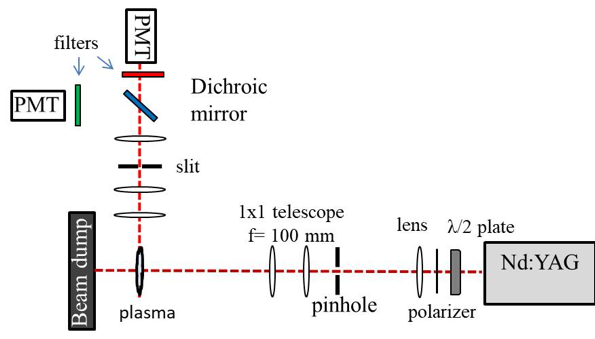Laser-Induced Incandescence
Advanced Diagnostics Navigation
- Atomic and molecular species, positive and negative ions
- Laser-Induced Fluorescence (LIF) and Two-Photon Absorption LIF (TALIF)
- Characterization of plasma, chemical composition and dynamic behavior
- Electron velocity distribution function, gas flow velocity and temperature
- Electric field and space potential
- Nanoparticle Diagnostics
- Surface Diagnostics
Laser-Induced Incandescence (LII)
Point measurements of particle size and density with time resolved LII
Spatial visualization of nanomaterial synthesis with planar LII
Sensitivity threshold is particle density ≥ 108 cm-3
Suited for particles with diameters 5 < dp < 4000 nm

Laser-Induced Incandescence is a technique in which a short-duration (nanoseconds) laser pulse heats nano-sized particles to high temperatures and the subsequent incandescence is observed. The incandescence allows the detection of the particles, but comparison of experimental signal and modeled incandescence as a function of time also provides the size distribution of the particles. The modeling of LII signal is performed by a model of heat transfer mechanisms in the arc vicinity, including laser absorption, conduction, sublimation, radiation, thermionic emission and finally the heating by radiation from the plasma. Two variants of LII are used - time-resolved LII (TR-LII) and planar LII (pLII). In pLII, images of the incandescence signal provide spatially resolved detection of the presence of nanoparticles. In TR-LII, modeling of the time evolution of the incandescence signal is used to calculate the size of the particles. The TR-LII detection limit is evaluated particle number density of 108 cm-3.

 This capability is located at the Princeton Plasma Physics Laboratory.
This capability is located at the Princeton Plasma Physics Laboratory.


